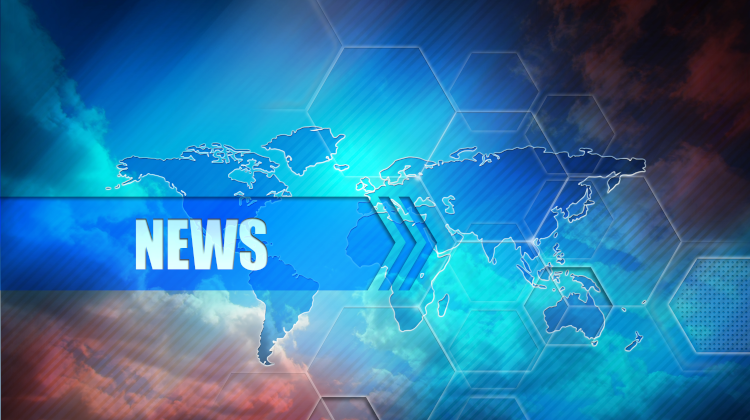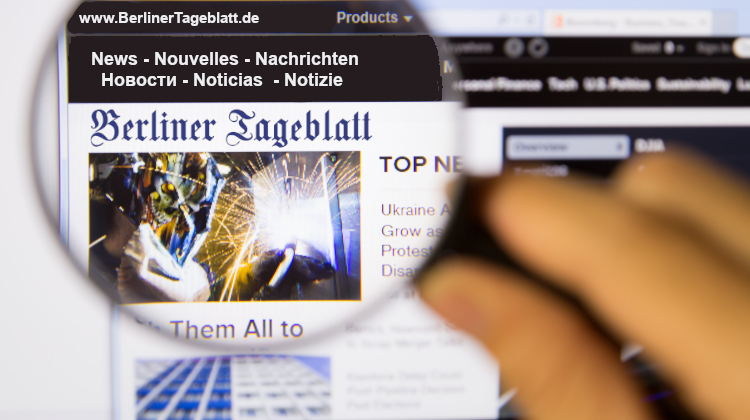
-
 China urges US to meet 'halfway' as markets rocket on Trump tariff pause
China urges US to meet 'halfway' as markets rocket on Trump tariff pause
-
Vatican releases image of Charles, Camilla meeting pope

-
 Waratahs' McKellar rules out becoming next Wallabies coach
Waratahs' McKellar rules out becoming next Wallabies coach
-
Taiwan's TSMC says first quarter revenue up 42 percent

-
 Rybakina leads Kazakhstan to BJK Cup victory over Australia
Rybakina leads Kazakhstan to BJK Cup victory over Australia
-
Vietnam says it will start trade talks with United States

-
 Expo 2025 in Japan: five things to know
Expo 2025 in Japan: five things to know
-
Japan's World Expo touts unity, and algae, in turbulent times

-
 Trump's tariff pause gives market relief, but China trade war intensifies
Trump's tariff pause gives market relief, but China trade war intensifies
-
Papua New Guinea lifts ban on forest carbon credits

-
 AI surge to double data centre electricity demand by 2030: IEA
AI surge to double data centre electricity demand by 2030: IEA
-
Scheffler, McIlroy seek fast start in hunt for history at Masters

-
 Samsung under pressure as US tariffs rattle South Korean economy
Samsung under pressure as US tariffs rattle South Korean economy
-
Munster wary of 'chaotic' Bordeaux-Begles in Champions Cup quarter-final

-
 Ranieri eyeing Champions League for Roma before derby swansong
Ranieri eyeing Champions League for Roma before derby swansong
-
Verstappen out to silence McLaren in the battle of Bahrain

-
 Asian stocks crack higher as Trump delays painful tariffs
Asian stocks crack higher as Trump delays painful tariffs
-
Cannes to unveil film selection under pressure over industry abuse

-
 Messi scores twice in Miami's frantic comeback over LAFC
Messi scores twice in Miami's frantic comeback over LAFC
-
Swimmers get medal boost with new events added for 2028 Olympics

-
 Companies keen to start deep-sea mining off Norway
Companies keen to start deep-sea mining off Norway
-
US House votes to limit judges' injunction power

-
 Pilgrims in Italy flock to tomb of first millennial saint
Pilgrims in Italy flock to tomb of first millennial saint
-
China consumer prices slump for second straight month: data

-
 Tearful Doncic scores 45 on return to Dallas as Lakers clinch playoff spot
Tearful Doncic scores 45 on return to Dallas as Lakers clinch playoff spot
-
Hamas leadership operating behind veil of secrecy

-
 Trump stuns with tariff backtrack but hikes China rate to 125%
Trump stuns with tariff backtrack but hikes China rate to 125%
-
Messi scores twice in Miami's three goal comeback over LAFC

-
 Amazon satellite launch scrubbed due to weather
Amazon satellite launch scrubbed due to weather
-
Art of the deal? How Trump backed down on tariffs

-
 Aston Villa boss Emery remains bullish despite defeat in Paris
Aston Villa boss Emery remains bullish despite defeat in Paris
-
Barca still improving: Flick warns rivals after thrashing Dortmund

-
 Echavarria risks Masters Par-Three Contest curse with playoff win
Echavarria risks Masters Par-Three Contest curse with playoff win
-
Who stands in the crosshairs of Trump's tariffs?

-
 US stocks soar on Trump tariff reversal, oil prices jump
US stocks soar on Trump tariff reversal, oil prices jump
-
Salah getting closer to new Liverpool deal: reports

-
 NBA rescinds Doncic ejection foul in Thunder loss
NBA rescinds Doncic ejection foul in Thunder loss
-
Cricketer De Villiers gets a Masters hit with pal Bezuidenhout

-
 Saudi top diplomat in US to prepare for Trump visit
Saudi top diplomat in US to prepare for Trump visit
-
Kvaratskhelia genius helps give PSG Champions League edge against Villa

-
 Sensational Barca destroy Dortmund in Champions League mismatch
Sensational Barca destroy Dortmund in Champions League mismatch
-
Author of explosive Meta memoir stars at US Senate hearing

-
 King Charles addresses Italian parliament, greets pope on visit to Rome
King Charles addresses Italian parliament, greets pope on visit to Rome
-
Dominican Republic ends search for nightclub collapse survivors

-
 Pentagon chief says US could 'revive' Panama bases
Pentagon chief says US could 'revive' Panama bases
-
Trump stuns with tariff backtrack but punishes China

-
 King Charles jokes, cites Monty Python at Italian state banquet
King Charles jokes, cites Monty Python at Italian state banquet
-
Strength in numbers: Latin America urges unity in face of Trump tariffs

-
 France could recognise Palestinian state 'in June': Macron
France could recognise Palestinian state 'in June': Macron
-
Tariff war could cut US-China goods trade by 80 percent: WTO chief


Japan-Australia flagship hydrogen project stumbles
Japan wants to become a hydrogen fuel leader to meet its net-zero goals, but one blockbuster project is hanging in the balance over questions about its climate credentials.
The Hydrogen Energy Supply Chain (HESC) is billed as a billion-dollar attempt to ship liquid hydrogen from Australia to Japan.
However, cold feet about the project in Australia means HESC will source hydrogen from Japan to meet a 2030 deadline for its demonstration phase.
Hydrogen sounds promising on paper: while fossil fuels emit planet-warming greenhouse gases, burning hydrogen creates only water vapour.
But it has not yet lived up to its promise, with several much-hyped projects globally struggling to overcome high costs and engineering challenges.
Hydrogen's climate credentials also depend on how it is produced.
"Green hydrogen" uses renewable energy, while "blue hydrogen" relies on fossil fuels such as coal and gas, with carbon-capture technology to reduce emissions.
"Brown hydrogen" is produced by fossil fuels without any carbon capture.
The HESC project aims to produce blue hydrogen in the Australian state of Victoria, harnessing abundant local supplies of lignite coal.
With the world's first liquid hydrogen tanker and an imposing storage site near Kobe in Japan, HESC had been touted as a flagship experiment showcasing Japan's ambitions for the fuel.
HESC says it aims to eventually produce enough hydrogen to "reduce about 1.8 million tonnes per annum of CO2 from being released into the atmosphere".
Japan's energy sector emitted 974 million tonnes of CO2 from fuel combustion in 2022, according to the International Energy Agency (IEA).
- 'Strong opposition' -
Japan's government pledged 220 billion yen (now $1.4 billion) to HESC's current "commercial demonstration" phase, which has a completion deadline of 2030.
But to meet this deadline, the project will now source hydrogen in Japan.
That has been blamed on cold feet among Australian officials concerned about the project's environmental payoff.
A spokesman for Japan's Kawasaki Heavy Industries, one of the companies behind HESC, said the decision to shift production to Japan was taken "chiefly because of delay in procedures on the Australian side".
The Victoria government did not respond to repeated requests for comment, though Australian officials have told local media that the move was a Japanese "commercial decision".
Australia's cooling interest in the project is due to "strong opposition" from environmental activists and energy experts opposed to carbon capture and storage, said Daisuke Akimoto of Tokyo University of Information Sciences.
"The main problem the project faces is the lack of approval of the blue hydrogen project by the Victorian government," Akimoto said.
Kawasaki said it has not yet decided what type of hydrogen it will procure in Japan and downplayed the project's challenges.
"We are very positive" about HESC and "there is no change" to the goal of building a new supply chain, the spokesman said, declining to be named.
- 'Evidence gap' -
However, sourcing the hydrogen locally leaves "a critical evidence gap at the middle of the project" -- proving carbon capture and storage work -- explained David Cebon, an engineering professor at the University of Cambridge.
That is "difficult and challenging and not being done successfully anywhere", Cebon said.
Kawasaki has said it will continue "feasibility studies" for the HESC project, but Cebon believes it will "quietly die", partly because of the cost of shipping hydrogen to Japan.
To be transported by sea as a liquid, hydrogen needs to be cooled to -253 degrees Celsius (-423.4 Fahrenheit) -- an expensive, energy-intensive process.
"I think wiser heads in the government just realised how crazy it is," said Mark Ogge from the Australia Institute think-tank.
Japanese energy company Kansai Electric has separately withdrawn from a different project to produce "green" hydrogen in Australia.
A company spokesman declined to comment on reports that the decision was due to ballooning costs.
- 'It will take decades' -
Resource-poor Japan is the world's fifth largest single-country emitter of carbon dioxide.
It already produces some hydrogen domestically, mostly using natural gas and oil or nuclear power, although this is limited and expensive.
Some experts are sanguine about HESC's challenges.
Noe van Hulst, a hydrogen advisor to the IEA, said it was important to take the long view.
"Pilot projects are undertaken to test innovations in practice: learning-by-doing," he told AFP.
"Yes, it is hard to develop a low-carbon hydrogen market and it will take decades," as with wind and solar energy, van Hulst said.
Solar in particular has seen costs plummet and uptake soar far beyond initial expectations and at greater speed.
And for now, "there isn't really an alternative (to) decarbonise these hard-to-electrify sectors like steel, cement, ships and planes", van Hulst added.
Y.Bouchard--BTB
